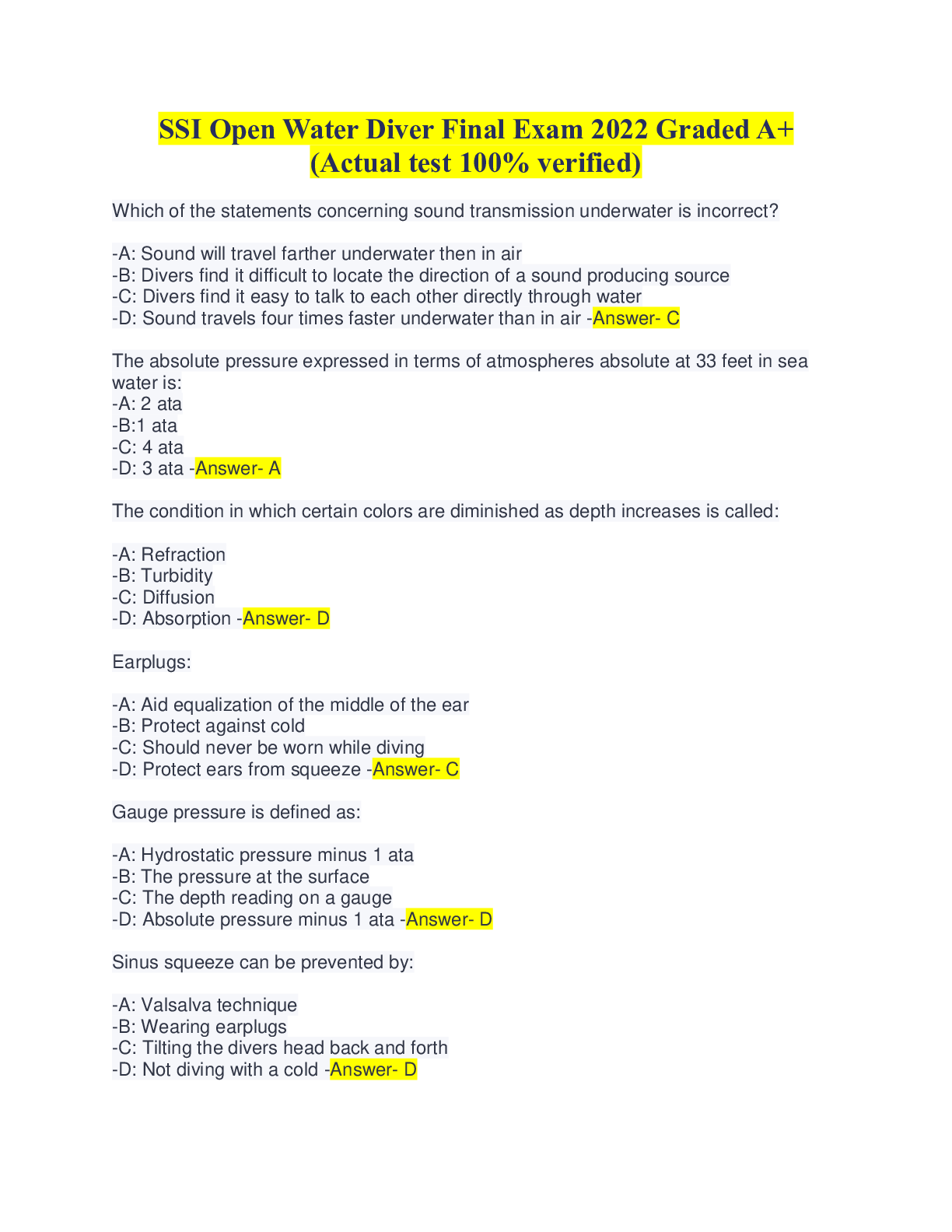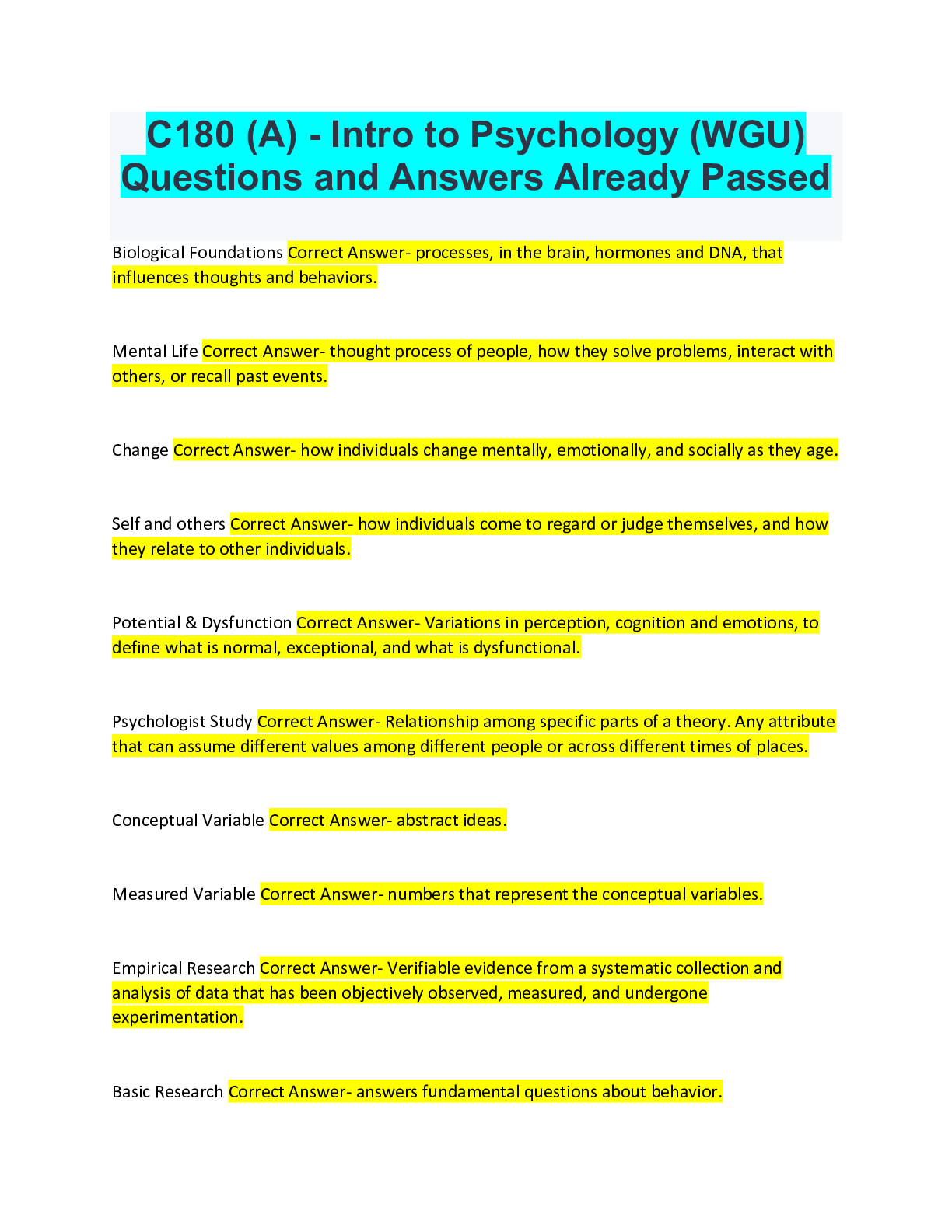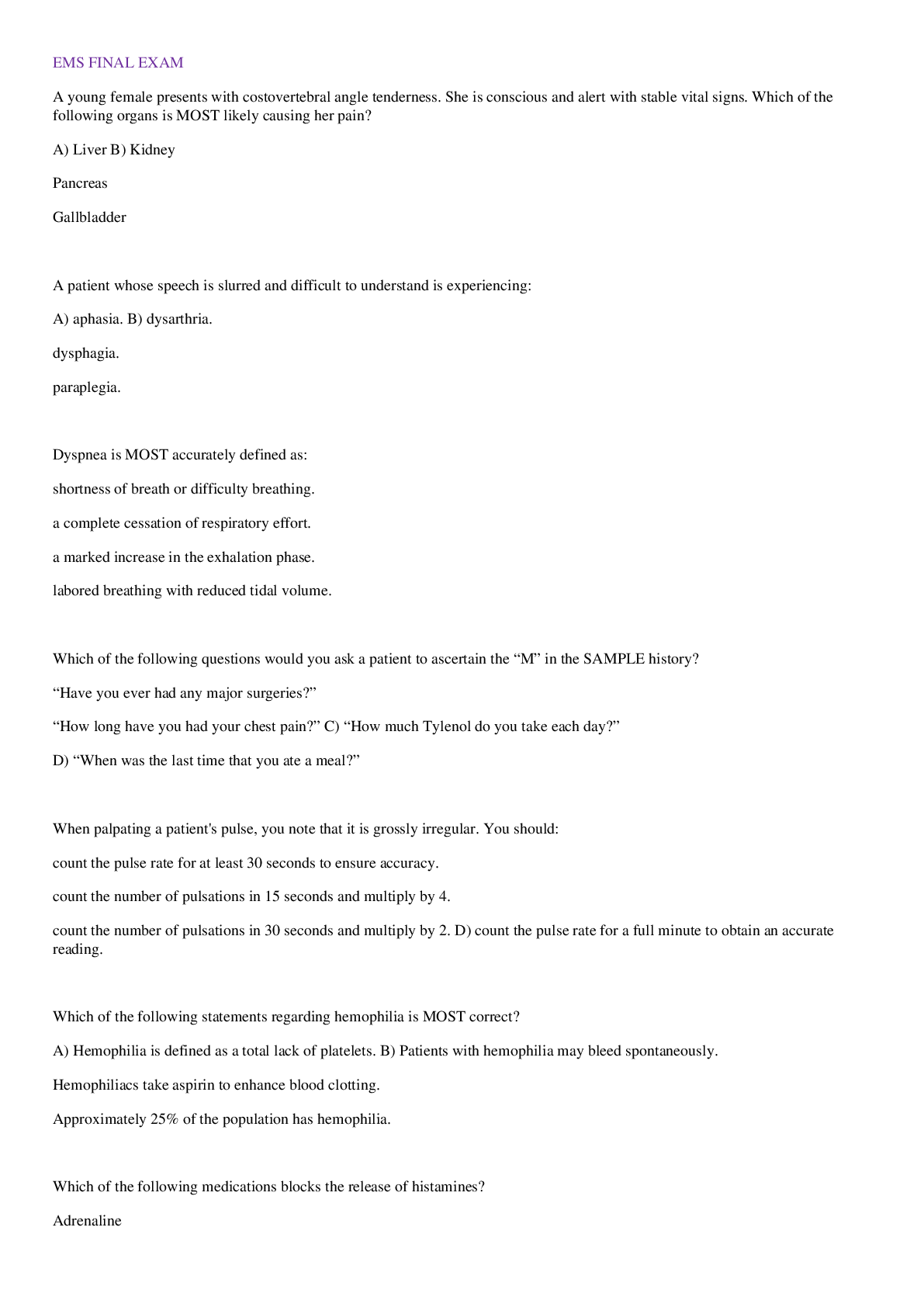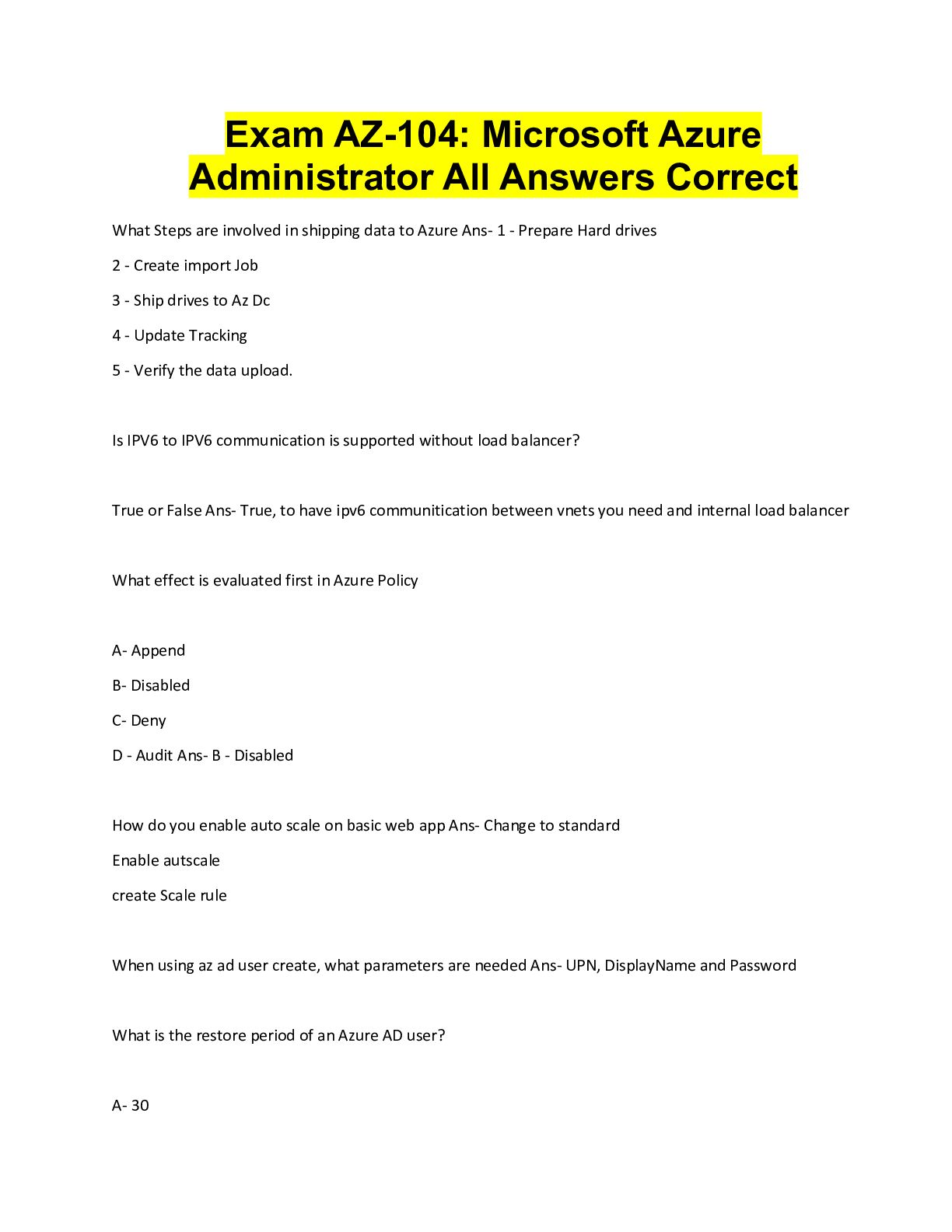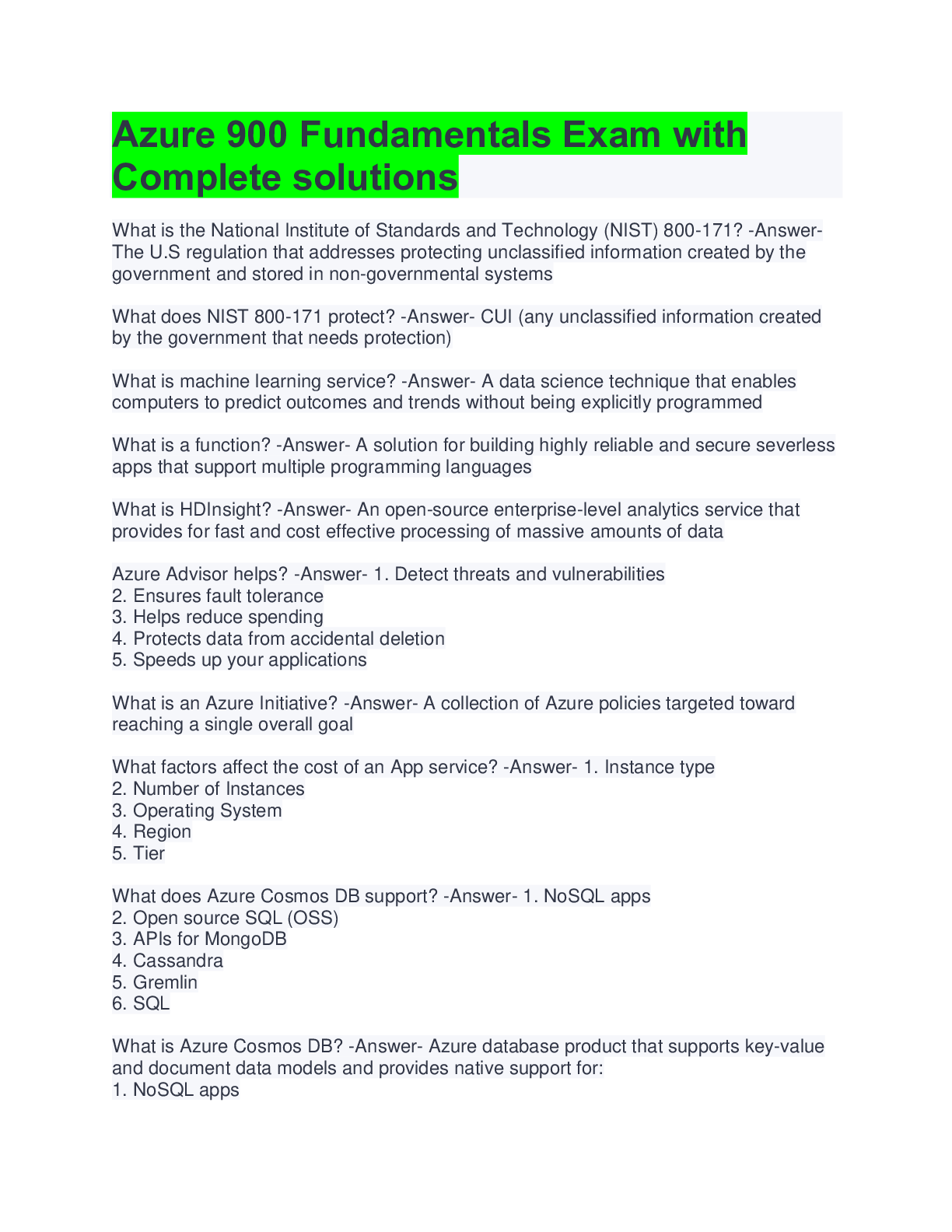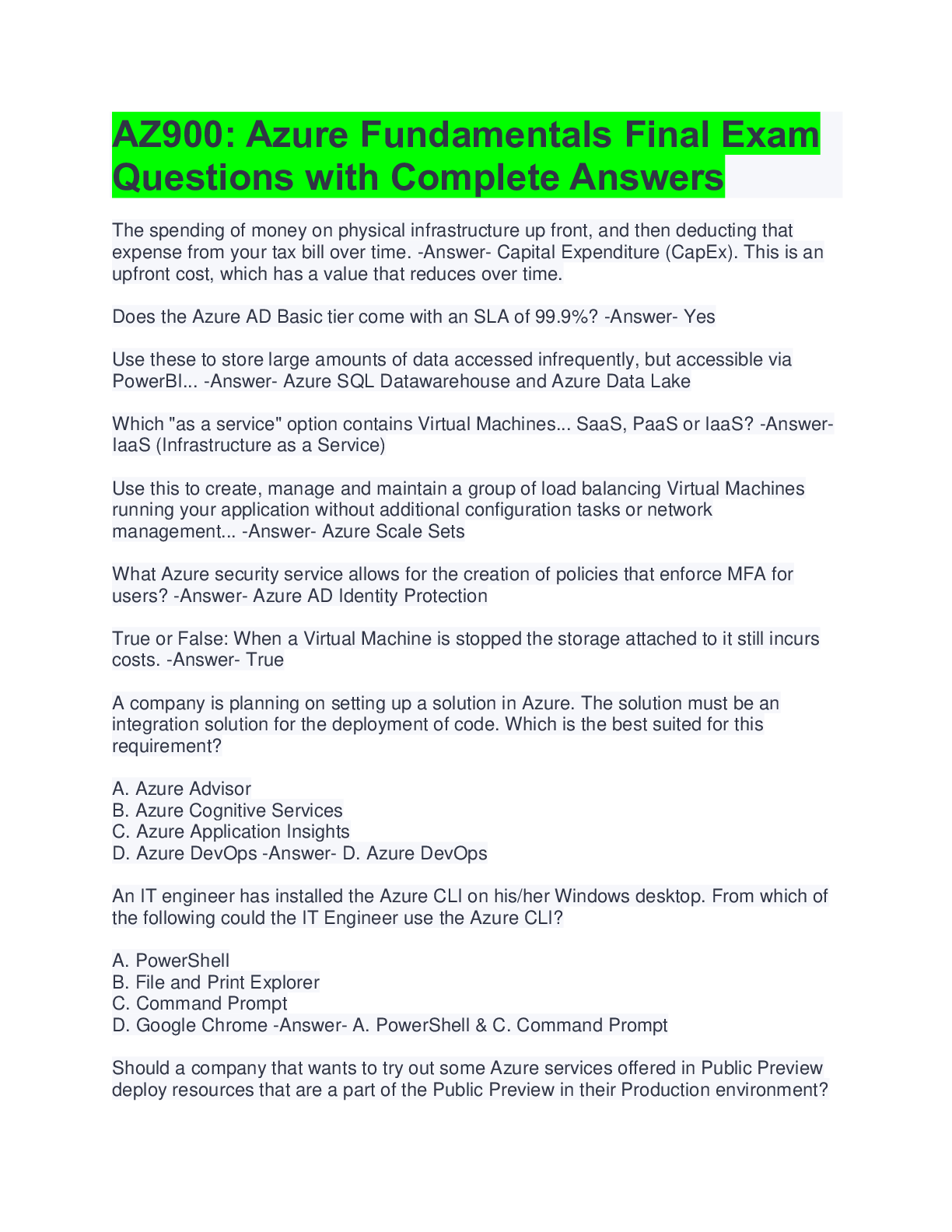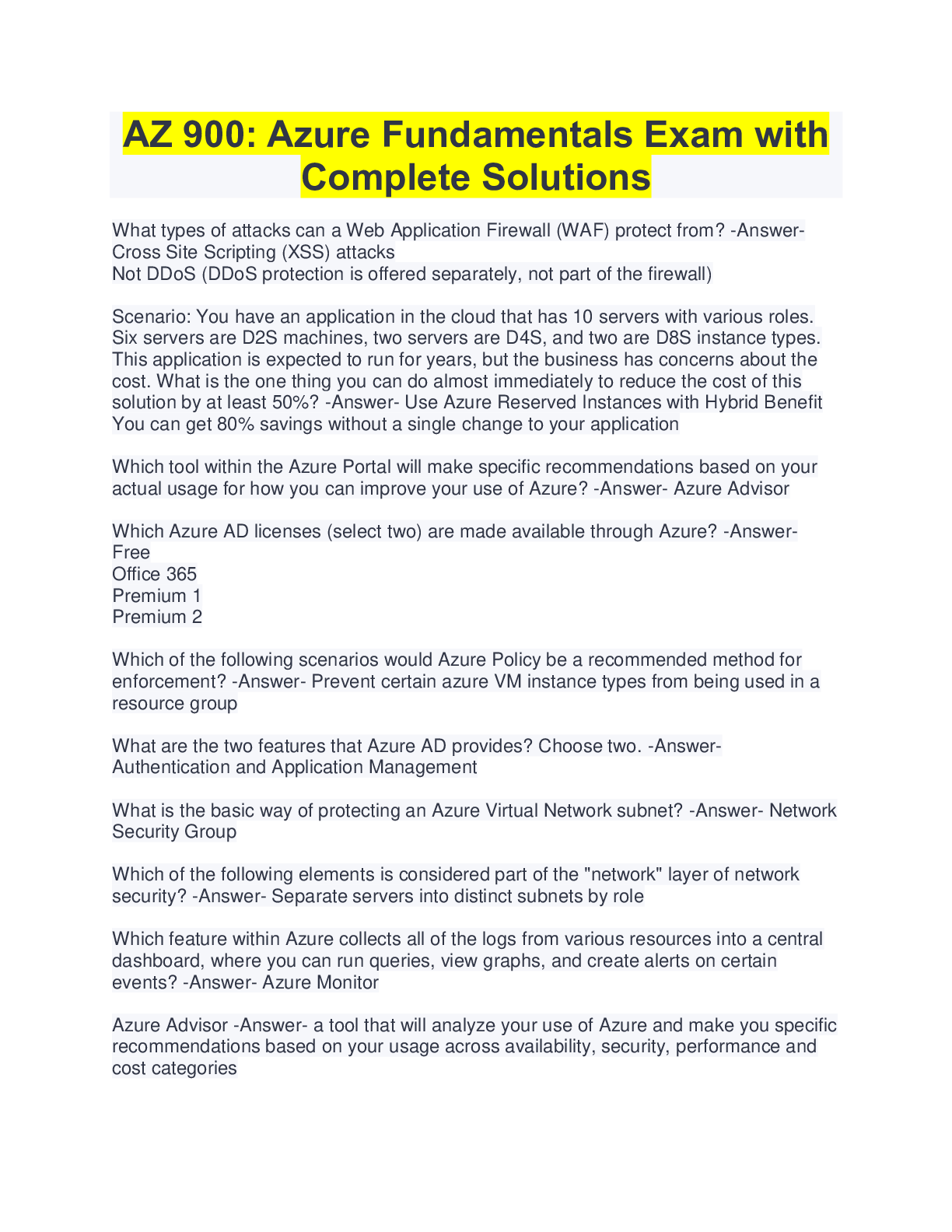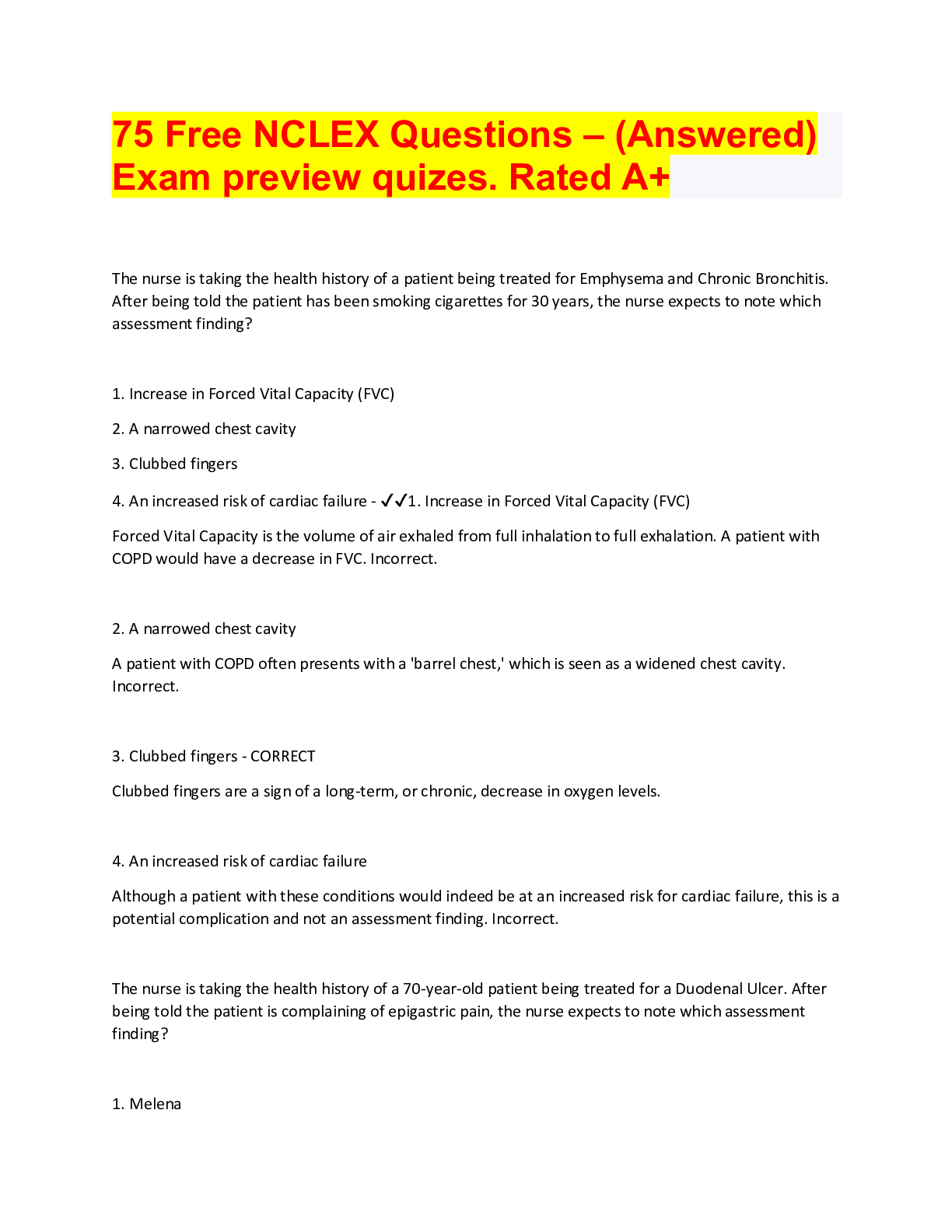Database Management > QUESTIONS & ANSWERS > Data Management Applications C170 with complete solution (All)
Data Management Applications C170 with complete solution
Document Content and Description Below
Data Management Applications C170 with complete solution What is a table? Answer- A table is a persistent representation of a logical relation that is a relation whose contents can be saved for per... manent use. What are the characteristics of a relational table? Answer- The characteristics of a relational table are that a table is perceived as a two-dimensional structure composed of rows and columns, each row (tuple) represents a single entity occurrence within the set, each column represents an attribute, each column has a distinct name, each intersection of a row and column represents a single data value, all values in a column must be of the same data format, the order of the rows and columns don't matter to the DBMS, and each table must have an attribute (or combination of attributes) that uniquely identifies each row (tuple). What is a tuple? Answer- A tuple is a row that represents a single entity occurrence within a set. What are records? Answer- A record is the same as a tuple (row). What is a field? Answer- A field is a column. What is a key? Answer- A key consists of one or more attributes that determine other attributes. For example, a social security number identifies all of the other attributes related to that person. What is determination? Answer- Determination is the state in which knowing the value of one attribute allows you to determine the value of another attribute. For example, if you know a key, you can find other information. What is functional dependence? Answer- Functional dependence is when knowing the value of one or more attributes lets you know the value of the other attributes. For example, knowing the first name and the social security number would let you find the person's last name. What is full functional dependence? Answer- Full functional dependence is when knowing the value of one or more attributes lets you know the value of other attributes and the value of the known attributesare NEEDED to find the other attributes. For example, a social security number lets you find the first and last name of someone. This is full functional dependence. If it was a social security number and a first name this would just be functional dependence because the first name is not required to look up the last name. All you need is the SSN. What is a determinant? Answer- A determinant is an attribute whose value determines the value of other attributes. For example, a social security number could be the determinant for your last name. What is a dependent? Answer- A dependent is an attribute whose value is determined by another attribute. For example, you last name could be a dependent of your social security number. What is a composite key? Answer- A composite key is a key that is composed of one or more attribute. For example, the key of your last name and you social security number could be used to determine your first name. This would be a composite key because you are using your last name and your SSN in the key. What is a superkey? Answer- A superkey is a key that can uniquely identify any row in a table. Some examples of this would be your social security number identifying a row corresponding to your information, but a superkey isn't limited to full functional dependence. Your SSN and your last name used as a key would still be a superkey. What is a candidate key? Answer- A candidate key is a minimal super key. This is to say it has no extra attributes. If you only need a social security number to identify the row related to a person than the candidate key is the SSN. A key consisting of an SSN and the last name in this case would not be a candidate key. What is entity integrity? Answer- Entity integrity is the condition in which each row (entity instance or tuple) in the table has it's own unique identity. This requires that all values in the primary key be unique and that the primary key cannot be null. What is a null? Answer- A null is the absence of a data value. A null should be avoided whenever possible. In fact, you can set a rule that prevents an attribute from being null. A null can create an issue when a function like average is used. [Show More]
Last updated: 2 years ago
Preview 1 out of 30 pages
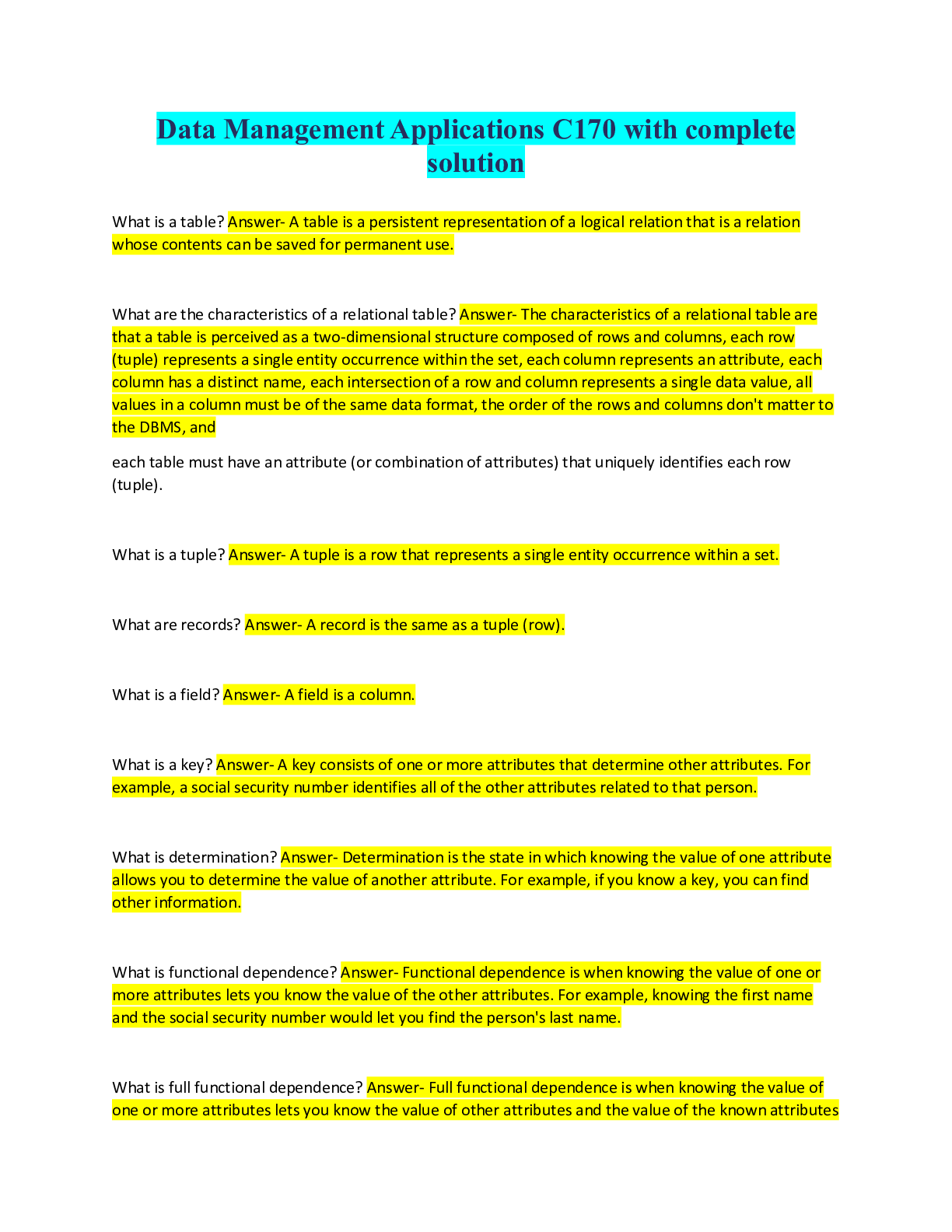
Buy this document to get the full access instantly
Instant Download Access after purchase
Buy NowInstant download
We Accept:

Reviews( 0 )
$10.00
Can't find what you want? Try our AI powered Search
Document information
Connected school, study & course
About the document
Uploaded On
Jul 12, 2022
Number of pages
30
Written in
Additional information
This document has been written for:
Uploaded
Jul 12, 2022
Downloads
0
Views
127

